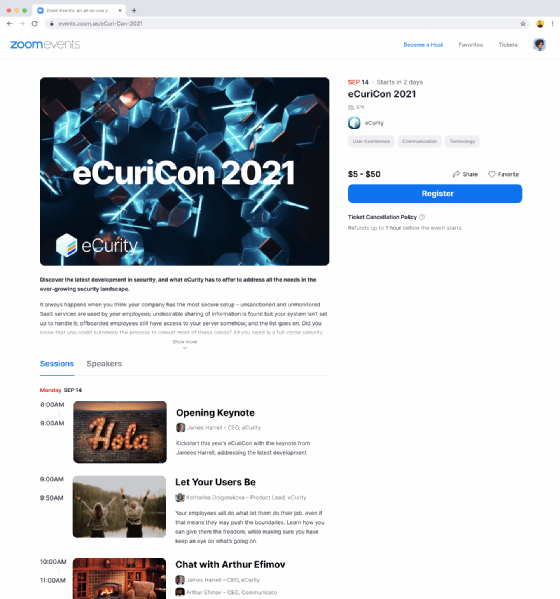
Getty Images/iStockphoto
Teams vs. Webex vs. Zoom: Comparing collaboration features
When organizations compare Teams vs. Webex vs. Zoom as their primary UCaaS platform, the deciding factor may be how each vendor approaches collaboration.
The adoption of cloud services rose sharply as a result of the COVID-19 pandemic, and unified communications as a service, or UCaaS, was no exception. Many organizations rolled out UCaaS tools to help employees maintain their business workflows while working remotely.
But now that organizations are no longer in survival mode, they can take a more strategic approach to their communication workflows as they plan for remote and hybrid work in the post-pandemic workplace. The decision for IT leaders is which UCaaS platform will best support their business. In that case, many companies will evaluate Microsoft Teams, Webex by Cisco and Zoom.
The pandemic drove all three vendors to innovate quickly and add popular features, from virtual backgrounds to enhanced security. But they differ in their approaches to supporting major collaboration needs, which organizations must keep top-of-mind as they evaluate the platforms.
"As you look at communications and collaboration going forward, it's important to think about where the companies are, where they're focused and what's best for the different parts of your business," said Phil Edholm, president of PKE Consulting.
At Enterprise Connect, Edholm and Brent Kelly, president of KelCor, Inc., took a deep dive into the key features of Teams vs. Webex vs. Zoom to help IT decision-makers understand which platform is right for their business.
Supporting hybrid video meetings
Even as employees return to the office, most meetings will have remote participants. The challenge for UCaaS providers is to ensure equity between remote and meeting room attendees, Kelly said.
One aspect all three vendors are addressing is intelligent framing so remote and in-room meeting participants look the same on camera. Cisco takes advantage of its video hardware by using AI in cameras to detect facial images and display attendees in a uniform fashion.
Microsoft and Zoom take a more back-end approach by using APIs to enable compatible devices, such as cameras from Neat and Poly, to track people's movement and adjust their on-camera appearance.

Other video enhancements include customizing meeting layouts. Microsoft, Cisco and Zoom address meeting layouts in a variety of ways.
Microsoft Teams offers meeting capabilities like spotlighting a participant, pop-out chat bubbles, and dynamic meeting layouts to make active speakers or the meeting room video larger. Teams also offers presenter mode, which enables participants to see a PowerPoint presentation and the speaker on the same screen.
"Microsoft has invested a lot in improving the layout of a meeting experience," Kelly said.
Webex has a feature like Teams' presenter mode to insert active speakers in front of a presentation. Webex also offers more control over what meeting attendees can see, Kelly said.

Meeting participants can also use the Webex virtual assistant to take notes during a meeting and provide meeting transcriptions and closed captioning. Cisco's acquisition of Slido has also boosted meetings within Webex by integrating Slido's audience engagement capabilities, such as quizzes, surveys and polls, he said.
Zoom offers Smart Gallery for meeting layout customization and supports live language interpretation for up to 20 simultaneous language audio channels. Zoom is also placing bets on virtual reality (VR) for hybrid meetings through an integration with Facebook's VR workspace, Horizon Workrooms, set to launch next year.
VR meetings can provide a more immersive experience with avatars that can move around a virtual environment and interact with collaboration features, like whiteboards. But Kelly said he wasn't sure how useful VR would be for most meetings.
"We saw this with AvayaLive," he said. "It didn't last long. But there may be some interesting use cases for Zoom virtual reality."
Comparing security controls
Certain security threats can pose problems for UCaaS platforms, including meeting disruption, eavesdropping and data theft. All three vendors address basic meeting and operational security in similar ways. But when comparing Teams vs. Webex vs. Zoom, organizations should pay attention to three areas of security where the vendors diverge, Edholm said.
- Sharing and chat controls. All three vendors offer levels of security for the overall organization and for guest users, such as disabling chat in meetings and limiting features for guest users. But, Edholm said, Cisco offers more nuance. Webex users, for instance, can apply security policies to internal and external users, as security rules can be applied down to an individual user.
- Shared content stored in the cloud. This is an area of significant differentiation, Edholm said. Microsoft and Cisco enable organizations to store content locally and in the cloud. While Zoom meeting recordings can be stored locally, shared files are stored entirely in the cloud, which means organizations need to have trust in Zoom to manage storage for them, he said.
- System and metadata. This area of security is where Cisco has an edge over Microsoft and Zoom. Cisco enables organizations to control data themselves with a Webex node deployment that can run on premises, Edholm said. Microsoft and Zoom secure all operational data and metadata entirely in the cloud. Edholm said he and Kelly could not confirm if Teams can be deployed on premises in a local Azure data center.
Contact center integrations
Contact center is another area where the three vendors diverge. The question organizations need to ask is whether it's better to get their UC and contact center from the same vendor, Kelly said.
Historically, companies bought their contact center services from the same vendor that provided their PBX. But, with the advent of IP-based communications, organizations no longer needed to tie their contact center to the PBX, he said.
However, Cisco maintains its position that the buying decision is easier if one vendor is involved, Kelly said. Cisco offers Webex Contact Center, which organizations can add to the overall Webex suite for a single, integrated platform.
Zoom announced plans to launch Video Engagement Center, which adds video to customer engagement and communications. Other companies have tried video-based customer service with little success, but with video now part of the mainstream, it could be a success for Zoom, Kelly said.
Microsoft partners with third-party contact center vendors for Teams and offers several ways to integrate contact centers, such as Direct Routing and Graph APIs.
Additional collaboration considerations
Despite the growth of video over the last 18 months, telephony is still an important component of a UCaaS suite. But organizations need to make a distinction between audio and telephony.
"A lot of people are making audio calls using IP-based collaboration without telephony," Edholm said. As such, the telephony demand for knowledge workers is dropping.
The good news for UC buyers is unless an organization has a specific telephony requirement, like having multiple phones to ring for the same call, all three vendors are equal in terms of functionality, he said.
Whiteboards are another factor to consider when evaluating Teams vs. Webex vs. Zoom for collaboration. Virtual whiteboards have grown in popularity to replicate physical whiteboards and support ideation in virtual meetings. All three vendors offer a whiteboard capability, with features including sticky notes, shape recognition and content sharing to team channels, but their approaches differ slightly.
Edholm said Microsoft's whiteboard approach is interesting because organizations can connect whiteboards to Microsoft's Fluid Framework, a developer platform for building collaboration apps. Zoom also recently announced updates to its whiteboard feature for more advanced capabilities, including persistence and a planned integration with Facebook VR.
Events are an emerging area of the UCaaS suite to meet a growing demand to support external communications and internal company culture. Events differ from meetings because they're more controlled with some speakers and many listeners, Edholm said. Organizations can use events internally for team-based and corporate events, as well as externally for marketing, conferences and customer events.

All three vendors are taking different approaches to events. Microsoft built an events platform into Teams, but it's more focused on internal events rather than external ones, he said.
Zoom built an events platform for internal and external use that's separate from its collaboration platform. However, the events platform is a separate cost, while Teams and Webex include events with standard licenses, he said.
Cisco is adding support for events in Webex through acquisitions, most notably the Socio Labs event platform. The integration of Webex and Socio Labs enables event capabilities such as attendee registration, customized event apps and post-event analytics.
"The reality is right now Cisco has a significant advantage," Edholm said.







